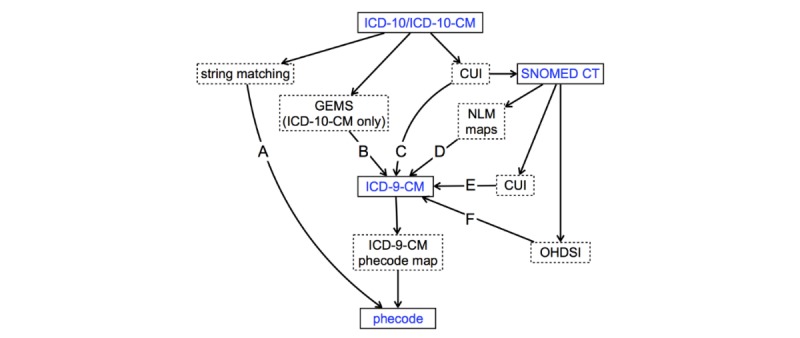Figure 1.

Mapping strategy for ICD-10 (non-CM) and ICD-10-CM diagnosis codes to phecodes. We mapped ICD-10-CM codes directly by matching code descriptions (path A) or indirectly to phecodes, using a number of manually validated mapping resources (paths B, C, D, E, and F). In path D, we used NLM’s SNOMED CT to create ICD-9-CM one-to-one and many-to-one maps [23]. To map ICD-9-CM codes to phecodes, we applied Phecode Map 1.2 with ICD-9 Codes (ICD-9-CM phecode map) [14]. Boxes with solid lines indicate clinical terminologies, and those with dashed lines describe the resources and mapping methods used. ICD-10-CM: International Classification of Diseases, Tenth Revision, Clinical Modification; CUI: Concept Unique Identifier; SNOMED CT: Systematized Nomenclature of Medicine Clinical Terms; GEMS: General Equivalence Mappings; NLM: National Library of Medicine; ICD-9-CM: International Classification of Diseases, Ninth Revision, Clinical Modification; OHDSI: Observational Health Data Sciences and Informatics.
